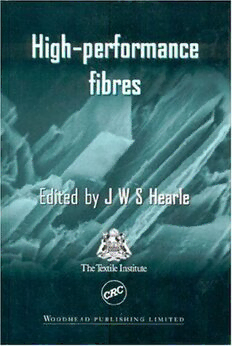
High Performance Fibres PDF
342 Pages·2001·3.397 MB·English
Most books are stored in the elastic cloud where traffic is expensive. For this reason, we have a limit on daily download.
Preview High Performance Fibres
Description:
Until a hundred years ago, natural fibres such as cotton, wool, and silk were commonly used in engineering applications. The introduction of manufactured fibres such as rayon, acetate, nylon, and polyester offered superior technical properties for industrial applications. A similar replacement of natural and regenerated fibres by synthetic fibres occurred in most technical textiles.High Performance Fibres covers the development of second- and third-generation high-performance fibres. The book discusses the aramid copolymer, melt-spun fully aromatic polyester, and Russian fibres. It describes gel-spinning and an alternative method of solid-state processing and features polymeric and inorganic high-performance, high-tenacity fibres. The book goes on to describe the new generation of fibres with thermal or chemical resistance.High performance fibres are used increasingly for a wide range of applications including geotextiles and geomembranes for construction and civil engineering as well as specialist fibres within composite materials where their ability to fulfill demanding roles makes them an effective choice for the engineer and materials scientist. Published in association with The Textile Institute, High Performance Fibres provides comprehensive coverage of the design and manufacture of high performance fibres and covers their capabilities and applications.
See more
The list of books you might like
Most books are stored in the elastic cloud where traffic is expensive. For this reason, we have a limit on daily download.
